Medium early hybrid of Helenas onion with high yield
Helenas is one of the most popular types of onions. The choice of gardeners is due to its characteristics - high yield, unpretentiousness and resistance to diseases typical of the culture.
The content of the article
Description of the hybrid
Helenas - first generation heterotic hybrid... Suitable for fresh consumption and as an additive in various dishes, as well as for canning.
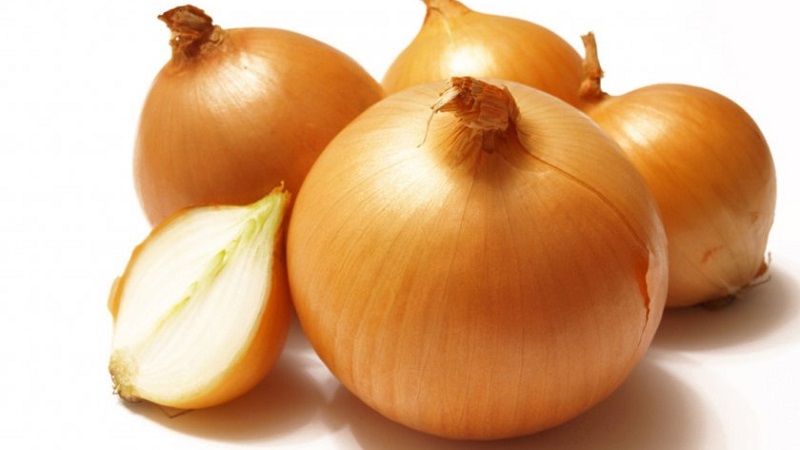
Origin and development
Helenas bow was launched in 2009 in the Netherlands, originator - ENZA ZADEN BEHEER B.V.
Chemical composition, trace elements, vitamins and beneficial properties
Helenas bow contains:
- vitamins A, C, PP and group B;
- essential oils;
- phytoncides;
- iron;
- potassium;
- carotene;
- zinc.
The vegetable prevents vitamin deficiency and strengthens the immune system, destroys microbes, increases hemoglobin, supports the cardiovascular system, accelerates metabolism, helps to remove toxins from the body.
Ripening period and yield
This is a hybrid of medium early ripening. Bulbs form within 90-105 days.
Marketable yield Helenasa is 434-601 c / ha.
Reference. The maximum yield was recorded in the Volgograd region - 982 c / ha.
Disease resistance
The hybrid is immune to diseases, but only with proper care. In case of sudden changes in temperature, the risk of developing fungal infections increases.
Characteristics of the bulb, description of the appearance, taste
Helenas onions have deep green tubular leavescovered with a thin layer of wax coating. The bulbs are round, weighing on average 100-170 g, covered with a dark brown husk. The pulp is white with a greenish tinge, has a semi-sharp taste and a characteristic onion aroma.
Growing regions and climate requirements
Hybrid included in the State Register for the Lower Volga region, but, due to its unpretentiousness to climatic conditions, it is successfully cultivated in other areas.
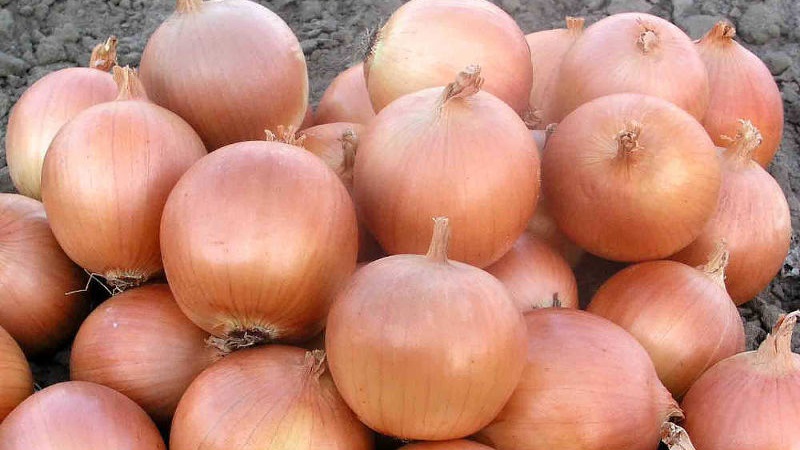
Advantages and disadvantages
Pros of Helenas onion:
- early maturation;
- large bulbs;
- unpretentiousness;
- disease resistance;
- high productivity;
- ripening - 90%, after ripening - 100%.
Minuses:
- susceptibility to temperature extremes;
- the inability to grow from their own seeds.
Difference from other varieties and hybrids
Comparison of Helenas with other varieties and hybrids is presented in the table:
| Name | Ripening period | Productivity, c / ha | Taste | Bulb weight, g | Bulb shape |
| Helenas | Mid-early | 434-601 | Semi-sharp | 100-170 | Rounded |
| Siberia | Early ripe | 219-530 | Semi-sharp | 80-100 | Wide elliptical |
| Music | Mid late | 199-340 | Semi-sharp | 110-130 | Oval |
| Albion | Mid-season | 167-220 | Semi-sharp | 70-100 | Rounded |
Features of planting and growing
The quality of the crop depends on how correct was seed prepared and planted in the ground on time.
One of the main advantages of this hybrid is the ability to grow from seed and from seed.
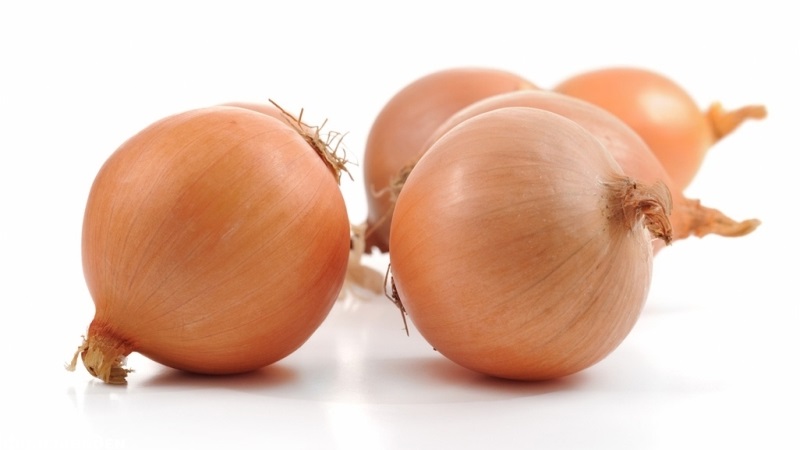
Preparing for landing
A week before sowing, the seeds are soaked for 24 hours in a solution of potassium permanganate until they swell, then laid out on a damp cloth and left for germination in a bright room at a temperature of + 20 ... + 25 ° C, making sure that the cloth remains damp. Before sowing, they are dried at room temperature for half an hour.
Reference. Many farmers soak seeds for 18-20 hours in a growth stimulant solution instead of germinating.
Soil mixture for growing seedlings is made from equal parts of sand, soil from the garden, peat and compost. For disinfection, the finished substrate is spilled with a fungicide solution or ignited.
Before planting, the sevok is heated at a temperature of + 35 ° C for 8 hours, and then cut off the upper part along the neck line to accelerate the emergence of shoots.
In the fall, plant residues are removed from the site, the soil is dug up 30 cm deep and humus is introduced. In the spring, re-digging is carried out and the earth is enriched with superphosphate, ammonium nitrate and potassium salt.
Ground requirements
The soil should be loose, nutritious, with weak or neutral acidity and good moisture and air permeability.
Timing, scheme and landing rules
The time of sowing seeds for seedlings depends on the climate of the region. If there is early spring in the region, sowing is carried out in the second half of February, in other regions - in mid-March.
The process of growing seedlings:
- Pour the soil mixture into the prepared containers and make 1 cm deep furrows in it every 5-6 cm.
- Place seeds in the furrows at intervals of 3 cm.
- Sprinkle them with earth and water lightly.
- Cover the container with polyethylene and put it in a bright place with a temperature of + 20… + 25 ° C.
- When shoots appear, remove the polyethylene, and reduce the room temperature to + 16 ... + 20 ° C.
- After 3 weeks, water the seedlings with mineral fertilizers, repeat the procedure after 10 days.
Seedlings are planted in open ground 2 months after the emergence of shoots... In the south, this is the end of April, in other regions - mid-May.
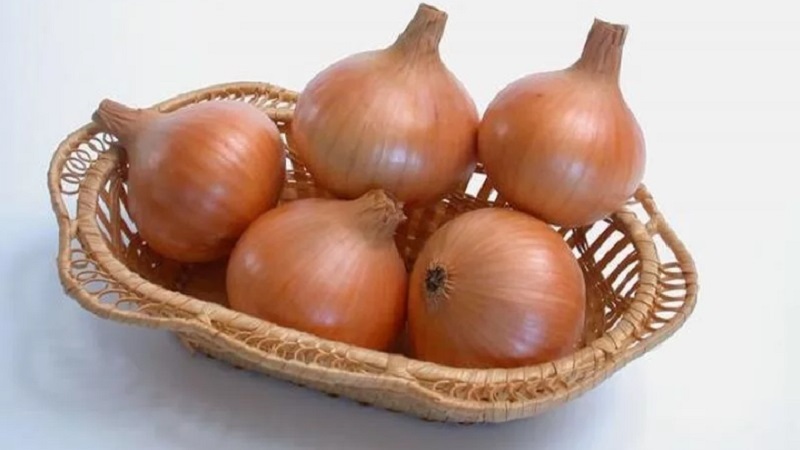
Instructions for planting seedlings:
- Make grooves 1-2 cm deep on the site, maintaining a distance between them of 25-30 cm.
- Moisten the soil slightly along the furrows.
- Place the seedlings in the furrows at a distance of 5 cm from each other, sprinkle with earth and water.
- Mulch the beds with peat.
Sevok is planted in the ground late April or early May. In areas with moderately cold winters, it is allowed to plant Helenas winter onion sets in late October or early November.
Important! When planting in winter, the air temperature should not exceed + 5 ° C.
Sevka planting scheme:
- Mark rows on the site at a distance of 20-25 cm from each other.
- Every 5-8 cm, dig planting holes 3-4 cm deep in them.
- Place an onion in each well, cut up.
- Sprinkle the holes with earth and tamp lightly.
In the spring, the beds are watered, in the fall they mulch.
The nuances of care
Grow onions in a well-lit areawhere moisture does not accumulate, so it is better to choose places on a plain or hill.
Helenas should not be planted after garlic and carrots... The best predecessors for him are legumes, cabbage, tomatoes, cucumbers, potatoes.
Reference. The optimum air temperature for culture development is + 20… + 25 ° C.
When caring for plants, you must observe rules for watering, loosening and weeding the soil, as well as timely fertilizing and treating plantings from pests and diseases.
Watering mode
The hybrid does not tolerate drought and excessive moisture, therefore, when watering, the main thing is regularity and moderation.
During active growth planting watered every 3-4 days, during the period of bulb formation - weekly, focusing on the state of the topsoil. Watering is stopped 20 days before harvesting so that the bulbs have time to dry out and are better stored.
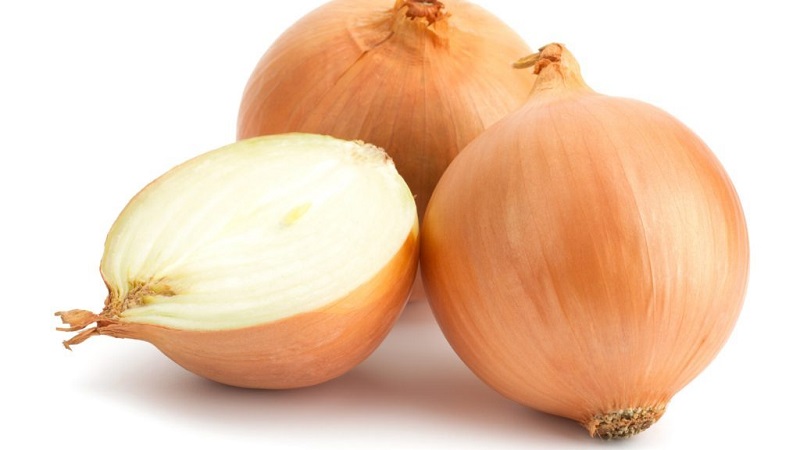
Loosening the soil and weeding
The land is weeded as the weeds growwhich shade the shoots and take moisture and nutrients from the soil.
Loosens the soil to a depth of 2-3 cm after each watering... The procedure helps to get rid of the dense crust on the soil surface and improve the access of oxygen and moisture to the roots.
Top dressing
Fertilizers are applied according to the scheme:
- 14 days after germination - diluted bird droppings (1 kg per 15 liters of water);
- during the formation of the bulbs - 10 g of potassium chloride and superphosphate per 1 m².
Disease and pest control
Despite good immunity, if the rules of planting and care are not followed, plants can infect diseases and pests, so it is important to know how to deal with them:
- onion flies - remove the affected parts of plants, dust the beds with tobacco dust and lime, in case of severe damage, treat with insecticides "Aktara", "Corado" or "Vantex";
- onion mites - sprinkle a mixture of tobacco and ash in the aisles, treat the plantings with Nugor, Fostran or Kemidim;
- peronosporosis and gray rot - get rid of infected plants, and treat the rest with the fungicides "Quadris", "Ridomil Gold".
Growing difficulties
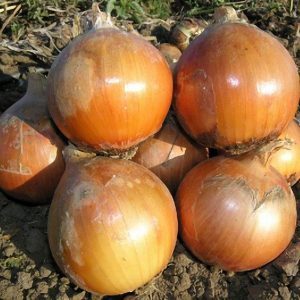 When cultivating Helenas onions some problems may arise:
When cultivating Helenas onions some problems may arise:
- poor seed germination as a result of sowing without prior preparation;
- decay of the bulbs due to excessive moisture;
- poor growth and poor development of bulbs, damage by diseases and pests if the rules of crop rotation are not followed.
Harvesting and storage
Onions can only be stored well if timely cleaning.
How and when to collect
The crop is harvested 10-14 days after the feathers turned yellow and died.... With spring planting of planting material, onions ripen at the end of summer, and with autumn - in the second decade of July.
The bulbs are carefully dug in 10 cm from the neck and pulled out of the ground by the leaves.
Storage features and keeping quality
Dug up bulbs are manually cleaned from the ground, sorted and removed from mechanical damage or signs of rot.
Harvest dried in the sun or under a canopy for 2-3 days, placing the leaves in one direction, and then cut off the aerial part.
Store onions in cardboard or wooden boxes with holes for ventilation... The storage room should be well ventilated, humidity should be within 70-80% and air temperature + 4 ° C. In such conditions, Helenas is stored for 4-6 months.
Tips from experienced gardeners
Experienced farmers recommendations:
- Lightly strip the tops of the bulbs a month before harvest. This contributes to their warming up by the sun and early ripening.
- Be sure to decontaminate the seed to reduce the risk of disease.
- Spray the onion with the wormwood solution every 3 weeks. This repels insects.
Reviews
Reviews of gardeners confirm the positive characteristics of the hybrid.
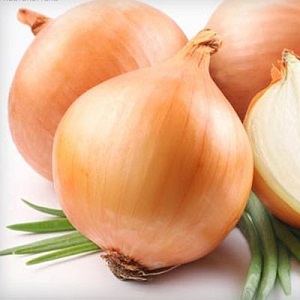 Marina, Volsk: “I have been growing Helenas for 3 years now. The first time I bought seeds and sowed them for seedlings, but then I didn't want to bother with it and began to buy ready-made seedlings. I like everything - the yield is good, the bulbs are large and beautiful. The only thing that the onion lacks is resistance to temperature fluctuations ".
Marina, Volsk: “I have been growing Helenas for 3 years now. The first time I bought seeds and sowed them for seedlings, but then I didn't want to bother with it and began to buy ready-made seedlings. I like everything - the yield is good, the bulbs are large and beautiful. The only thing that the onion lacks is resistance to temperature fluctuations ".
Vasily, Saratov region: “I saw a photo and read a description of the Helenas onion variety on the Internet, and I heard about it for a long time, but somehow my hands did not reach to plant. Started growing last year. I was pleased with the result - the bulbs grew by an average of 120-150 g, the harvest was rich, it lay in the cellar for 4 months, then some bulbs began to deteriorate ".
Conclusion
Helenas is a medium-early ripening onion that can be grown even by novice gardeners. The hybrid is characterized by large bulbs with a semi-sharp taste, abundant yield and a high degree of resistance to diseases and pests.